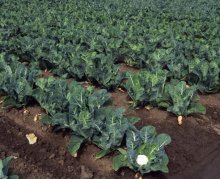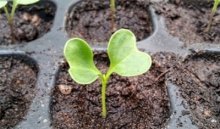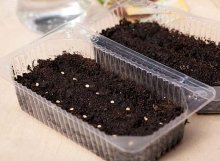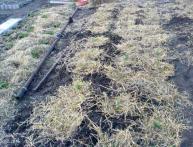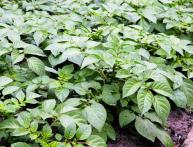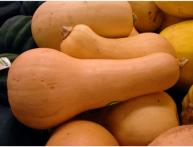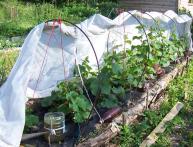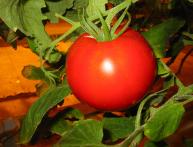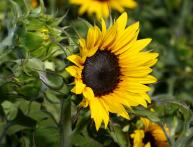Features of growing cauliflower Snowball

Cauliflower Snowball is a hybrid of early ripening cabbage, the taste of which will not leave any lover of vegetable dishes indifferent. Medium size, round in shape, weighing up to 1.5 kg, dense and snow-white - it always bears fruit well.
Content:
Preparing the soil for planting seeds
In order to grow good and strong seedlings cauliflower Snowball, necessary before planting seeds prepare the ground. Experienced gardeners recommend be sure to sterilize it, since seedlings Snowball is easily affected by blackleg.
The most proven and uncomplicated way to sterilize soil is to dry it on a metal sheet in a preheated oven at 80 degrees for 20 - 30 minutes. Such disinfection destroys not only dangerous insects, but also fungi and bacteria.
Important: you cannot increase the temperature of warming up the earth, as this can lead to soil infertility, mineralization of organic nitrogen, an increase in ammonium nitrates, and the death of beneficial microorganisms.
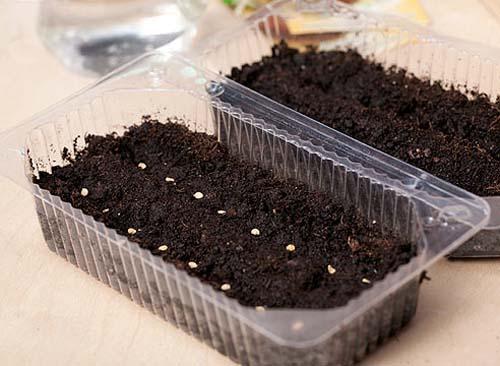
Seed planting technology
The end of February - the beginning of March is the time to plant Snowball seeds. For good germination of the stem, it is necessary to soak seeds in warm water 40 - 50 degrees for 30 minutes, and then dry them a little. Such heat treatment of grains is necessary for the purpose of disinfection from clubroot.
After drying the seeds, plant them in small containers to a depth of 10 cm.
This cauliflower variety loves light very much. Since the days are still short in February and March, it is necessary to provide light for seedlings. This can be done using an ordinary fluorescent lamp. In addition, as the soil dries out, water the seedlings and once we feed complex fertilizers KerimaLux. As soon as the cabbage sprouts form 2 strong leaves, carefully, without picking, transplant the plant into a larger container in which the cabbage seedling will grow until transplanted into the ground.
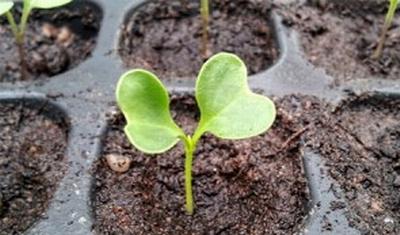
Landing in an open area
As soon as the danger of night frosts has passed, cabbage can be planted in an open area.
Before planting seedlings, it is worth adding up to 10 kg of rotted manure per 1 sq.m of land. This fertilizer will serve as a good base of nutrients for the seedlings and will help the cabbage to take root and grow better.
Forming holes must be done taking into account a distance of up to 40 cm from each other and a depth of 20 cm. A handful of wood ash is poured into the finished hole and covered with a small ball of earth. The plant is deepened to 1 leaf and sprinkled.

Cabbage care
To get a good harvest, cauliflower should be carefully looked after. During the entire summer season it is fed 3 times.
- The first feeding is a week after planting. Add 200 grams of mullein, magnesium, manganese, boron to 10 liters of water and add it under each cabbage seedling. In this case, the bushes must be covered with earth, since the roots of cauliflower are superficial and need strong support.
- The second feeding is carried out after 2 - 3 weeks, taking into account naivety or the absence of a rainy season.This time, 0.2 g of boric acid, 0.10 grams of molybdic ammonium acid and vitriol are added to 1 liter of water.
- The third feeding is after the formation of a small knot, which is sprayed with a solution of 1 tablespoon of potassium sulfate per 10 liters of water.
Throughout maturation period cabbage, the plant is needed once a week water water and at the same time loosen the soil so that with each fertilizer the cabbage gets everything useful material.
Snowball not affected diseases, but cabbage white caterpillars love it very much. They can be collected manually or Enterobacterin can be used.
In early autumn, if you want the plant to grow further, you can grow it indoors. The cabbage is dug up without shaking off the soil and planted in a small container, tightly covered with soil. In 1.5 - 2 months, the fetus can gain another 200 grams of weight.
As you can see, growing this variety of cauliflower in your garden is not so difficult; you just have to follow rules of care for cauliflower:
- Regular watering every week with loosening the soil;
- Fertilizer;
- Shedding new roots with soil;
- Collection of pests.
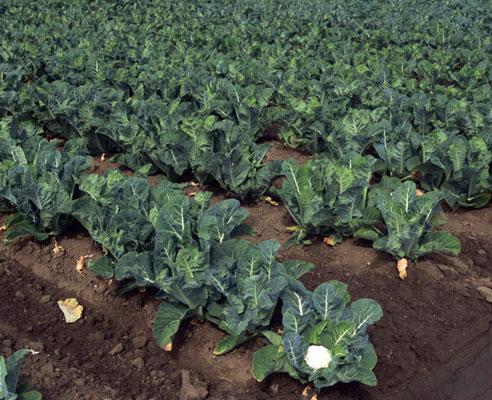
Tips for Growing Cauliflower
Interesting information about the vegetable garden

